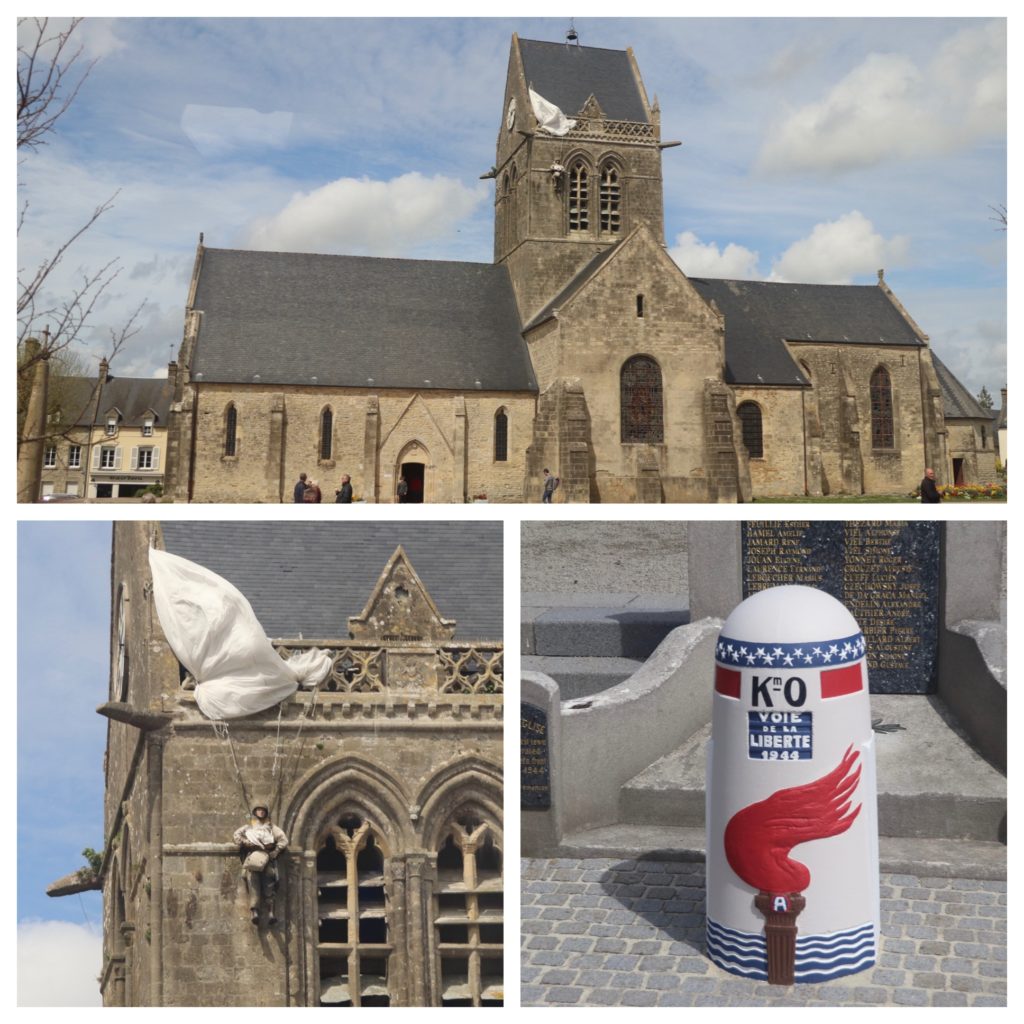Today’s trip fulfilled one of my lifelong dreams: to see the Bayeux Tapestry. I’ve been a long time fan of British history.
The drive to Bayeux took about an hour and a half. Along the highway were signs indicating the upcoming exits for some major WWII sites. Our guide also pointed out the fields that were used as drop zones for paratroopers on D-Day.
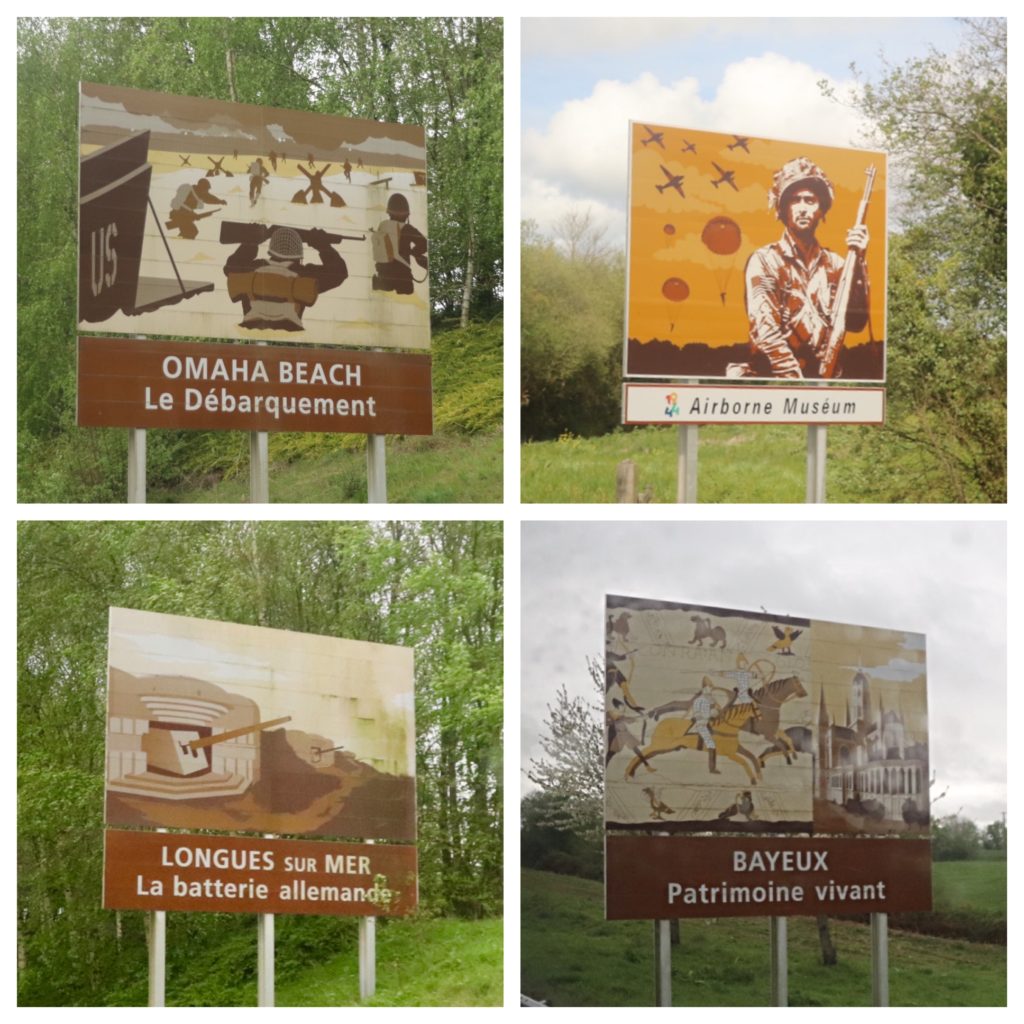
We arrived in Bayeux and immediately went to the museum to see the tapestry.
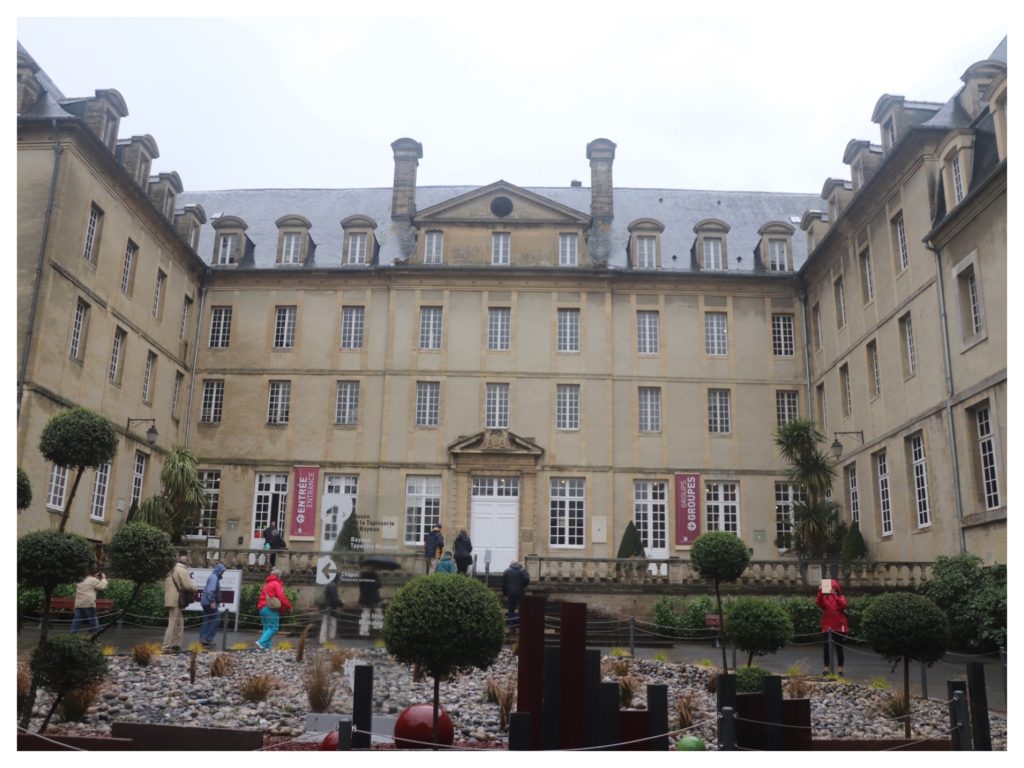
The tapestry is about 230 feet long and displayed behind glass in a humidity and temperature controlled environment. In it’s long history it has not been treated very well and at one time it was used to cover soldiers carts and was almost cut up before someone rescued it.
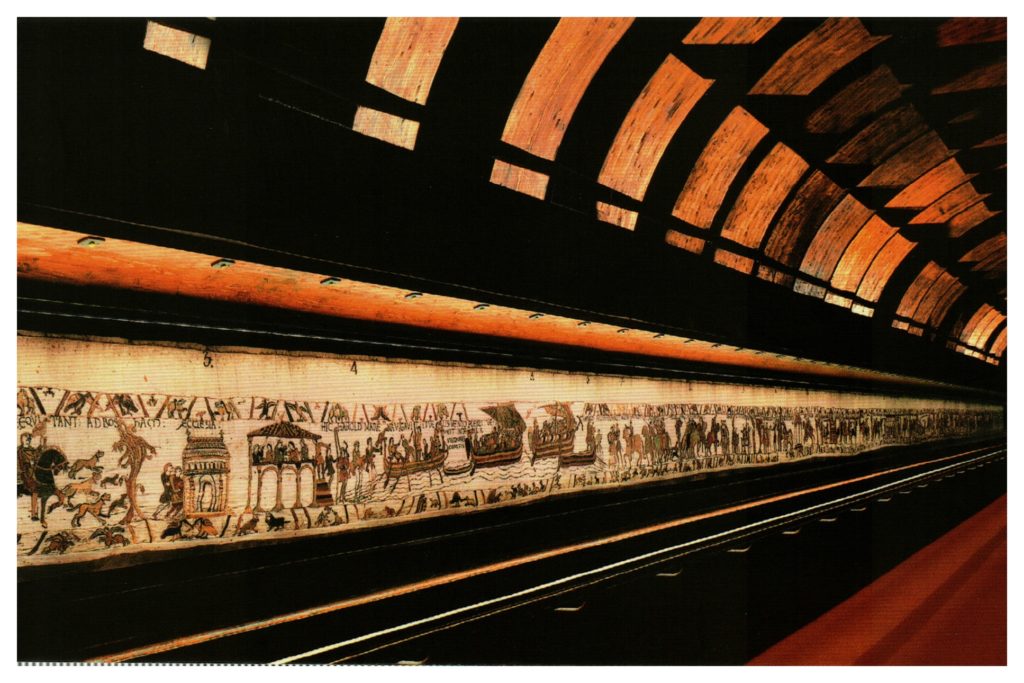
The tapestry tells the story of the French Duke William of Normandy and the English Duke Harold Godwinson through the battle of Hastings in 1066 AD when William became the King of England. Two of the scenes are shown below. The top scene is the most important as it supposedly shows Harold pledging his allegiance to William should William ever become king. The bottom scene shows William’s invasion fleet after he found out that Harold had been made king. The tapestry was commissioned by William’s half brother, Bishop Odo, and completed around 1077 AD.
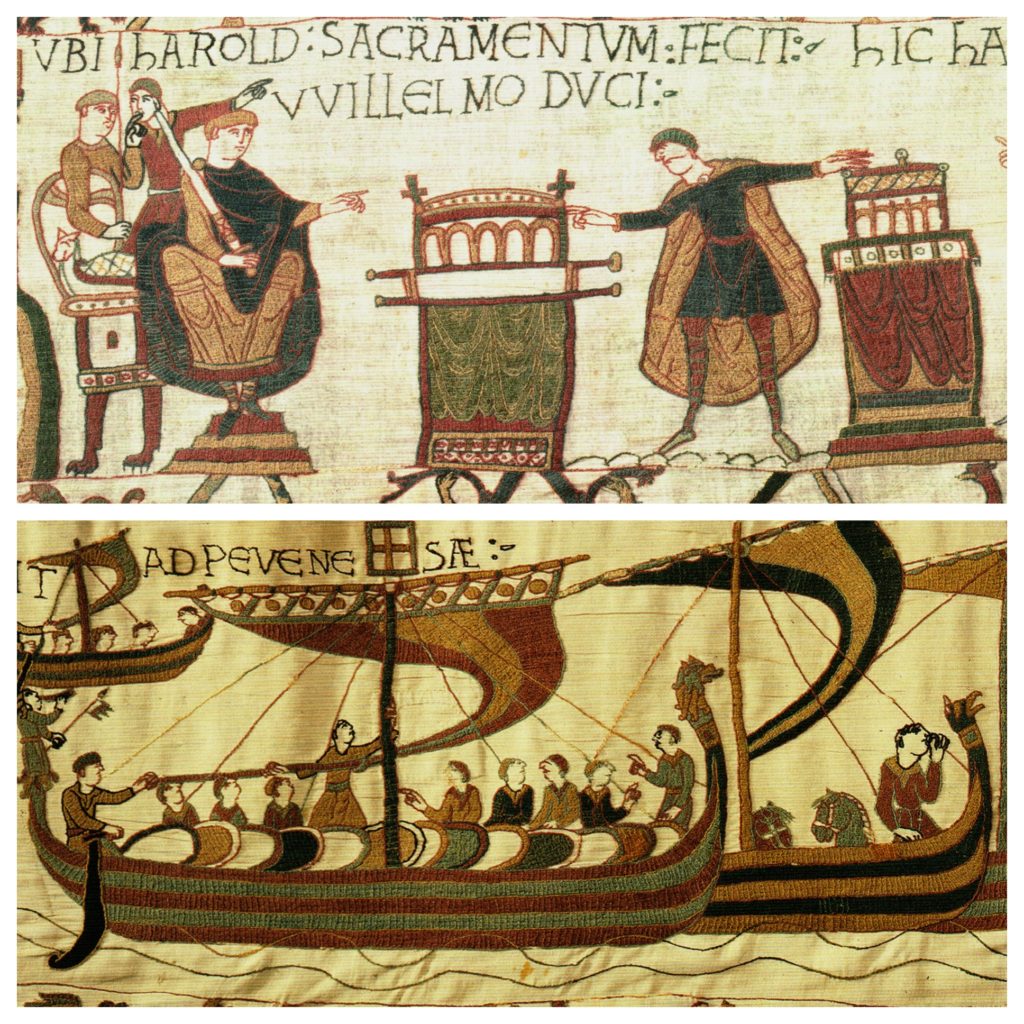
After viewing the tapestry and listening to a description of each scene, I went upstairs to the museum that exhibited the materials that were used to create it and the sewing methods used. If you look closely at the two pictures above you can see the stitching described below.
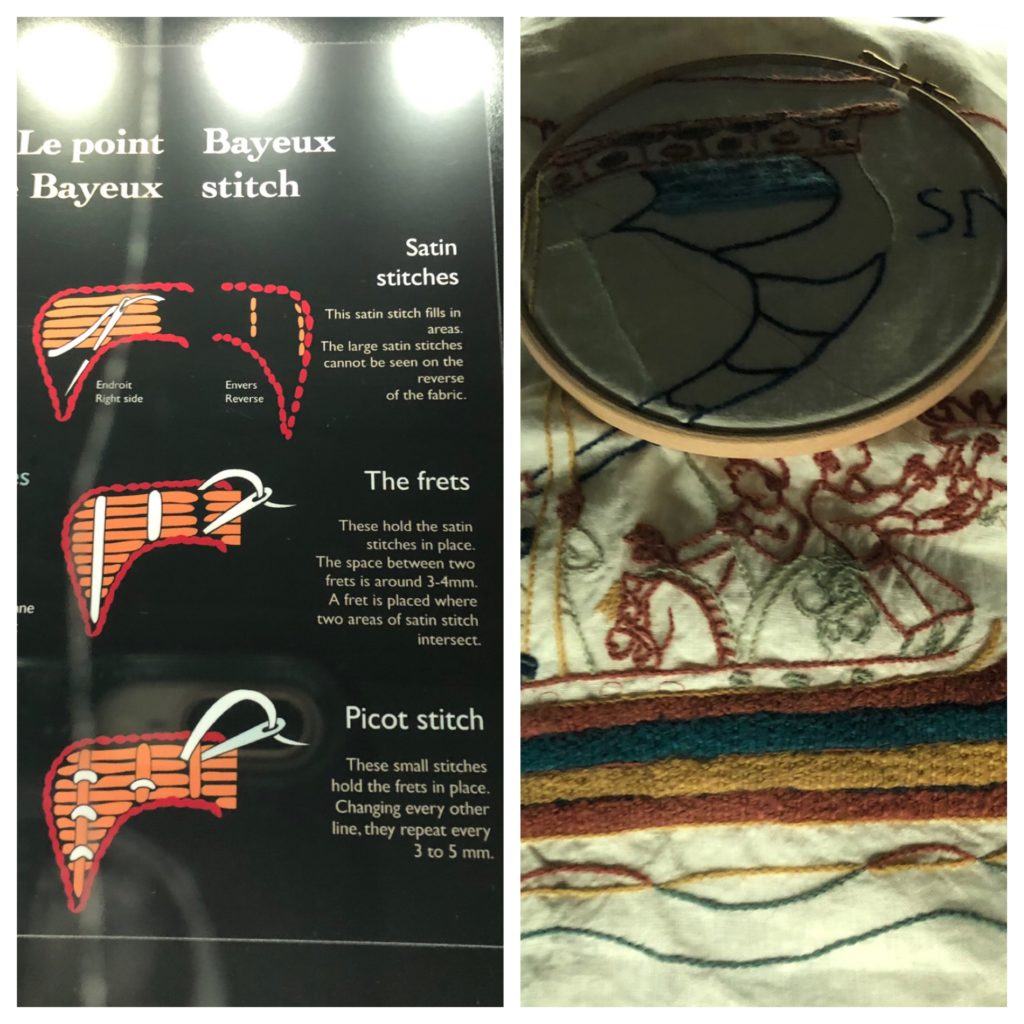
When I finished at the museum, it was time for lunch. I found a small out of the way shop and had a slice of their quiche of the day (ham and cheese) and a chocolate Nutella crepe for desert.

In the afternoon we visited the Bayeux Cathedral. It is said that the tapestry was hung from the 2nd floor balcony for all to see.

One scene painted on the wall and recently restored was the murder of Archbishop Becket in Canterbury by English knights during Henry II’s reign in England. Our guide indicated that the scene was painted because of donations to the cathedral by Becket’s mother.
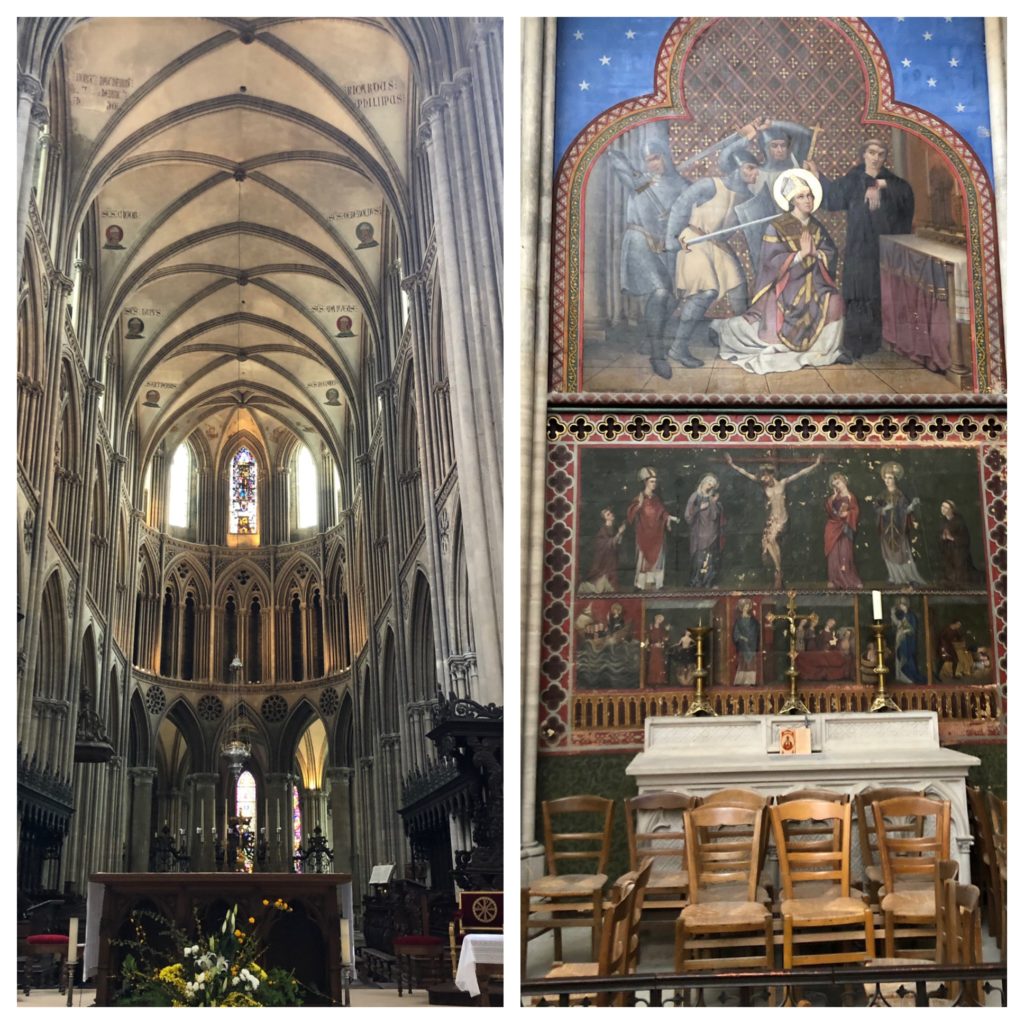
I also saw a large memorial plaque for the British who died in WWII. After we finished our tour of the cathedral we drove by the Bayeux War Cemetery containing over 4,100 graves of British Commonwealth soldiers. A memorial across the road lists the names of 1,800 soldiers who died but have no known grave. Britain is well regarded here as Bayeux was the first city to be liberated by the British during the Battle of Normandy shortly after D-Day. After the drive by we headed back to the ship.

Our guide and bus driver surprised us with a quick drive by the church in Sainte-Mère-Église. This is where a paratrooper’s parachute caught on the spire of the town church. He could only observe the fighting going on below. He hung there limply for two hours, pretending to be dead, before the Germans took him prisoner. The incident was portrayed in the movie “The Longest Day” by actor Red Buttons.
